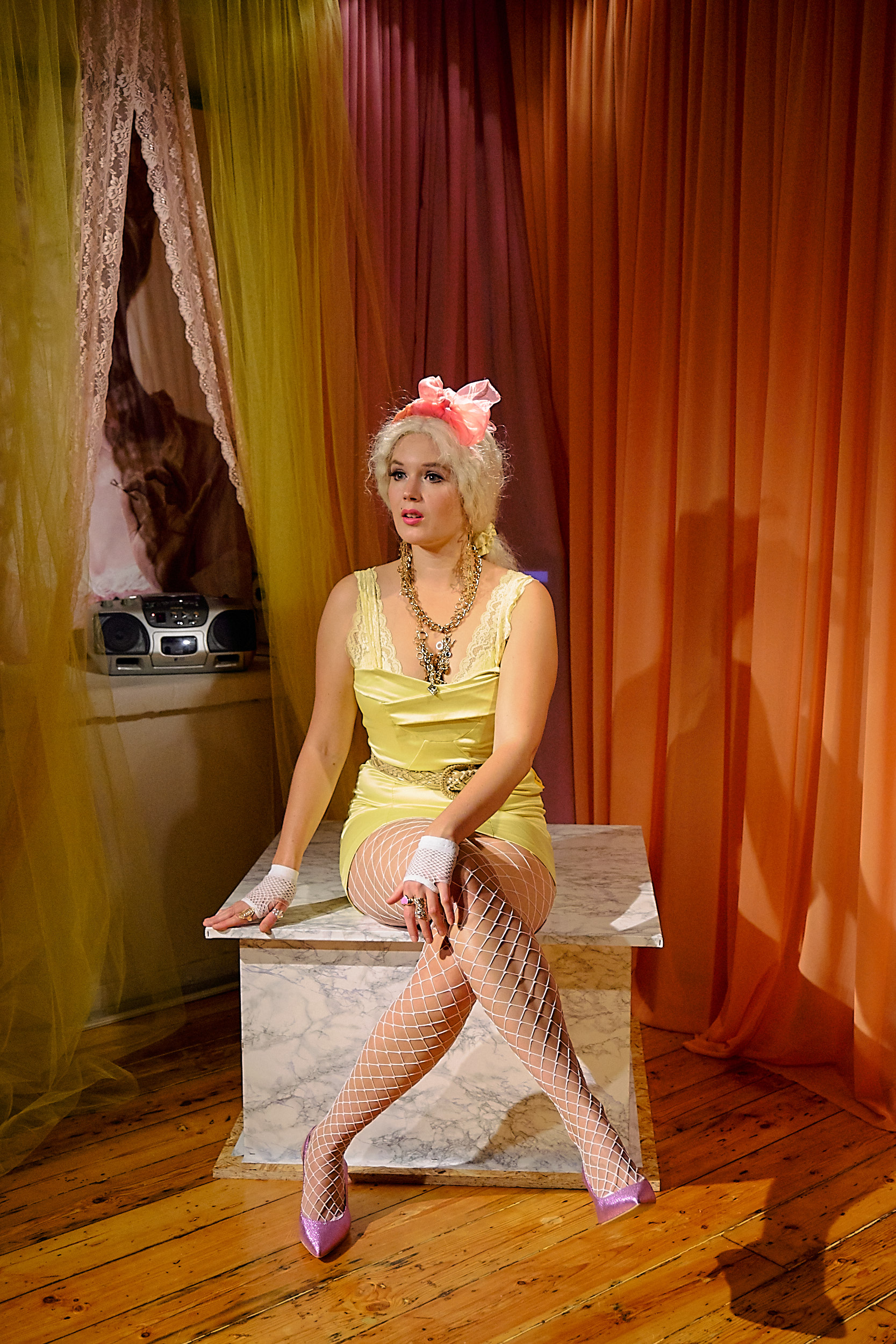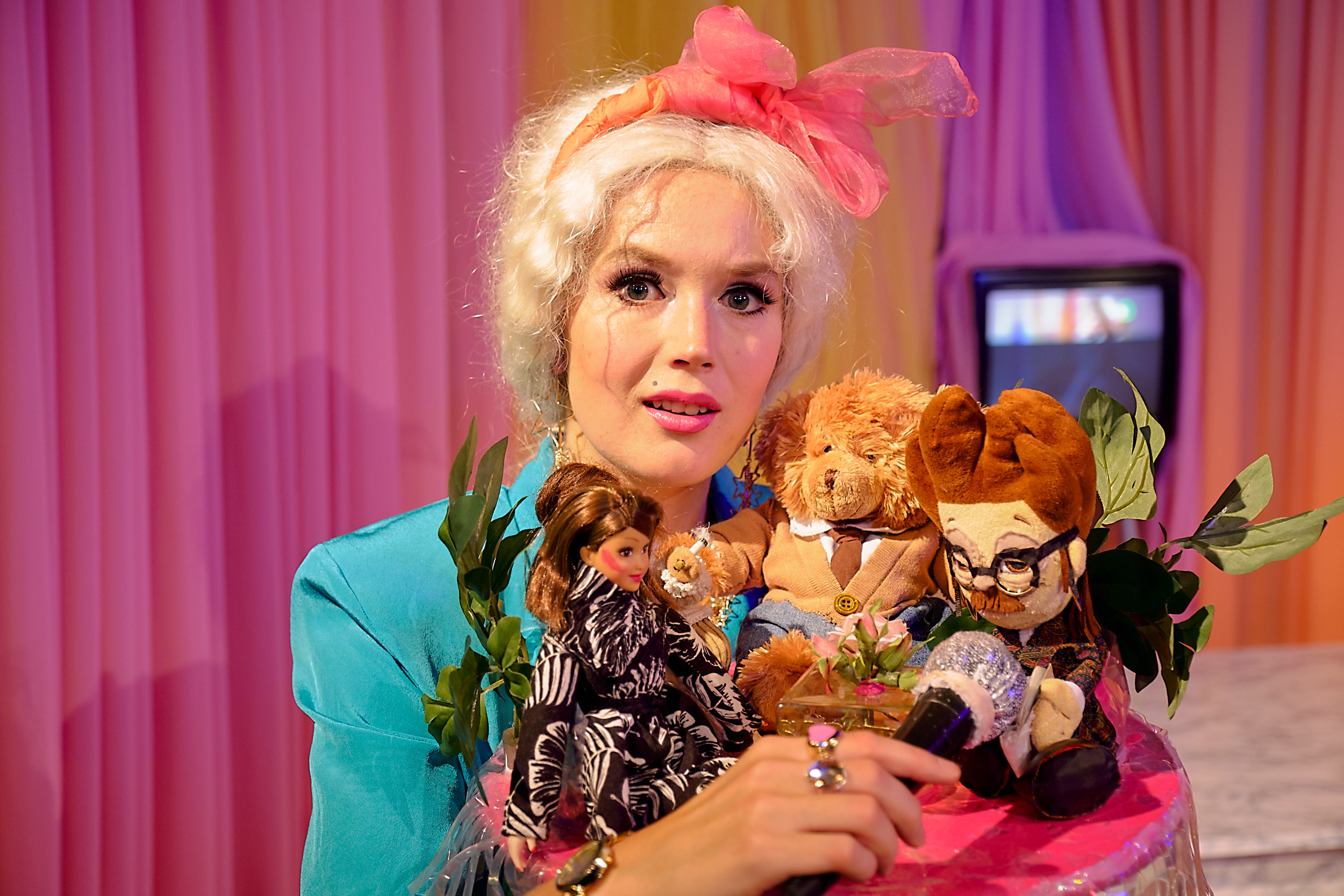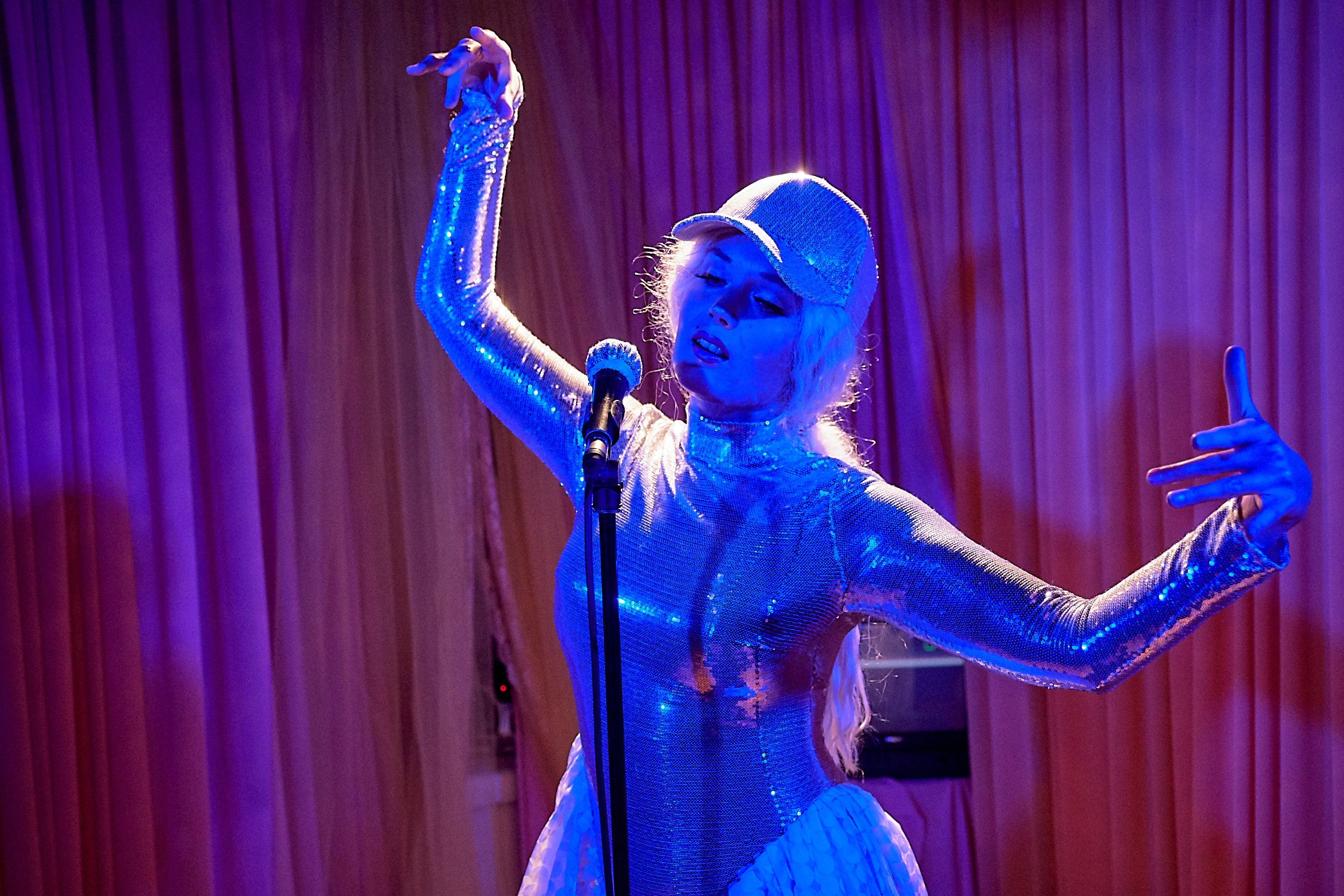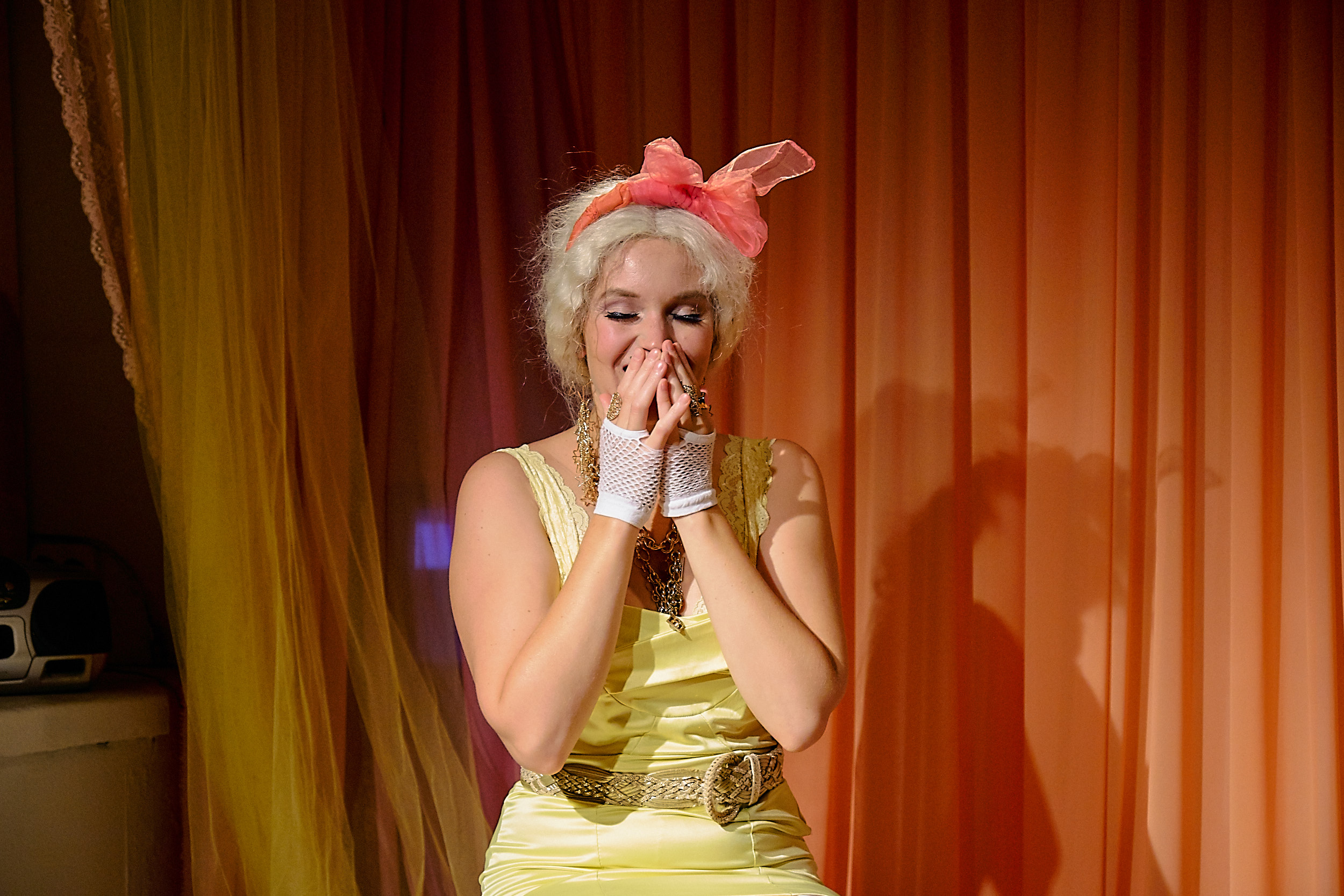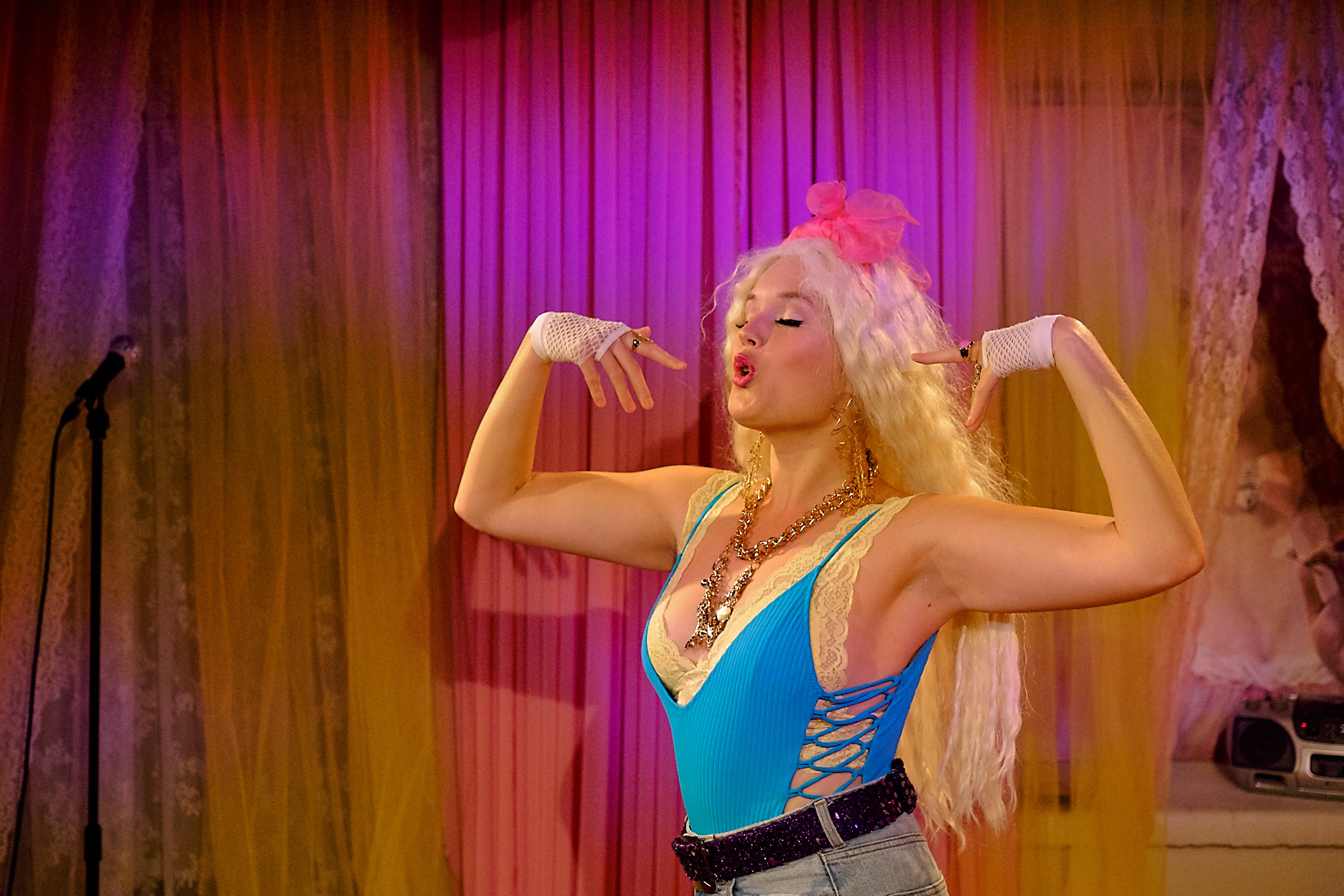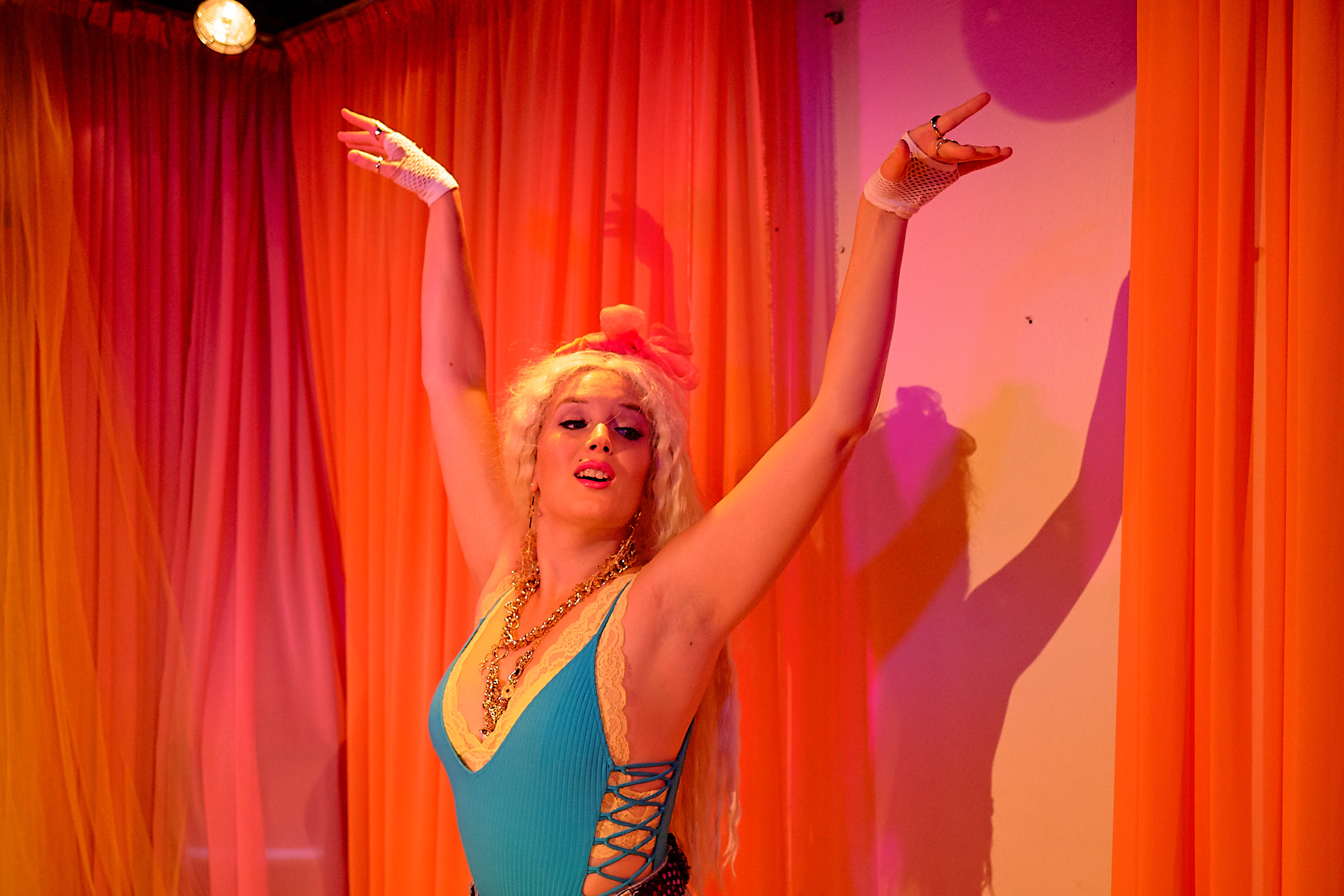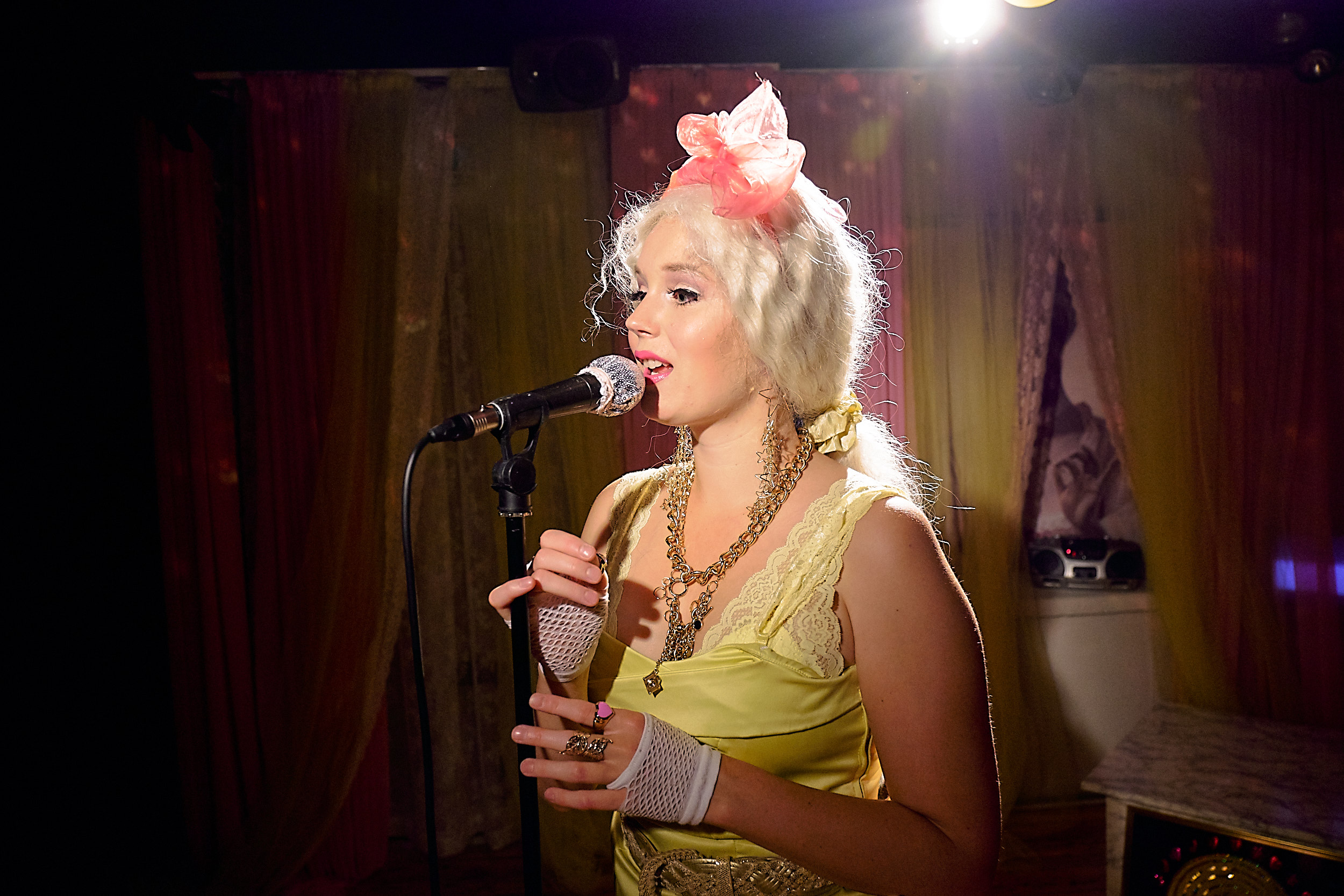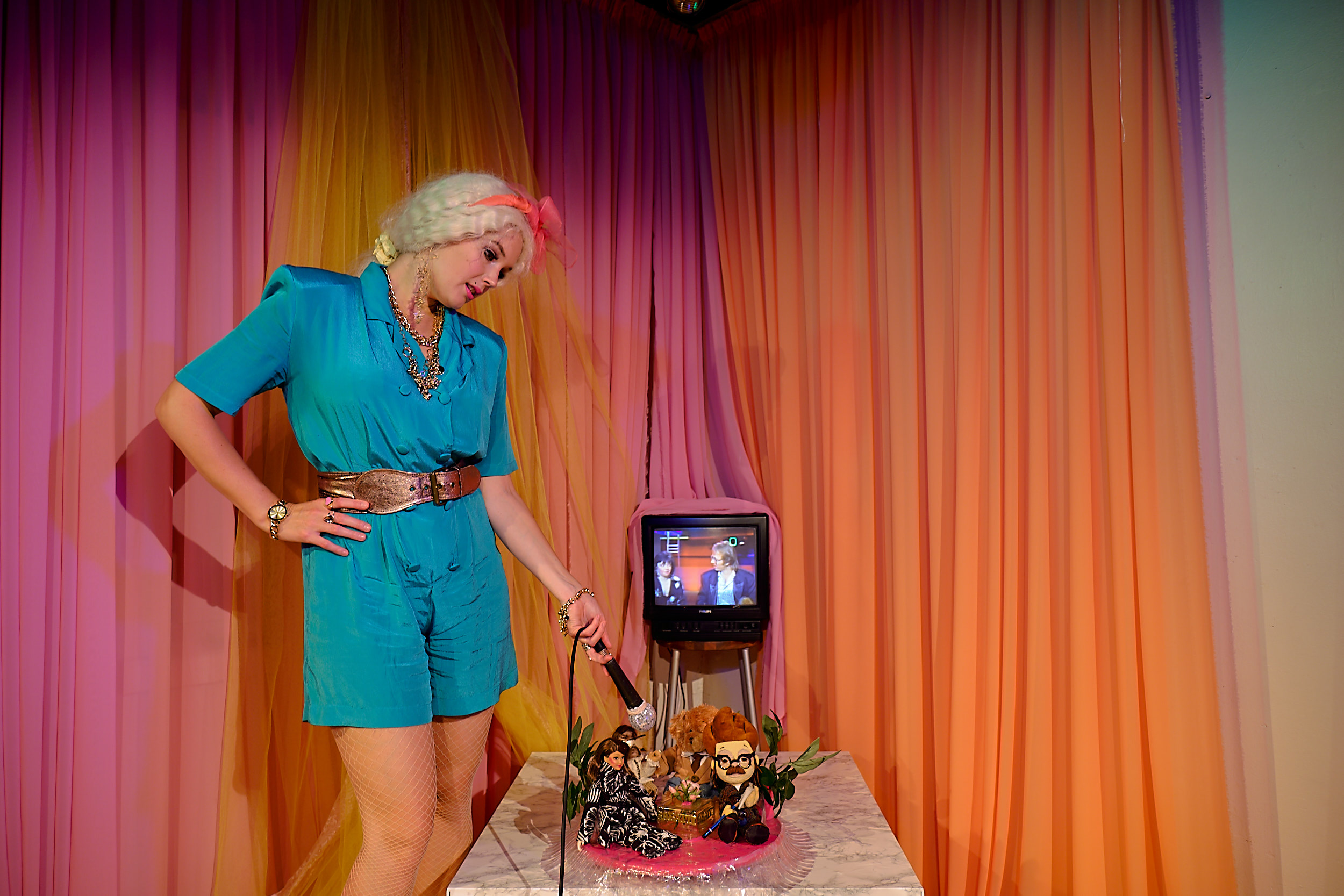On Stage – Pia Andersson
Writing – Laura Gustafsson
Music and sounds – Tuomas Hautala
Directing – Sini Pesonen
Lighting and video desing – Ina Niemelä
Costume design – Tellervo Syrjäkari
Scenography – Tellervo Syrjäkari and Ina Niemelä
Premiere 9.9.2017 at Teatteri Jurkka
Performance language Finnish
#kikkafanclub
Photos – Marko Mäkinen
Kikka Fan Club is a tribute to a childhood’s idol who taught us, the working group, then, and even more so now, about play, joy, and fun.
Kikka (1964–2005) is a Finnish singer who was at the height of her fame in the early 90’s. Even though her popularity she was also much belittled in media. What we today may interpret more as a joyful performance of female gender, was at her time noted as something obscene and cheap, and she was often reduced as a woman who uses her sexuality in order to attain publicity.
Kikka Fan Club is not a biography. Through Kikka’s character the monologue studies mechanisms of play (in every sense of the word), the inevitability of decay, and person’s freedom to be a multitude of things.
Soundscape composed by Tuomas Hautala is influenced by Kikka’s original songs but also by classical music. Sparkling, anti – Aristotelian structure of the performance is inspired by the structure of a symphony – and perhaps a bit by female orgasm.
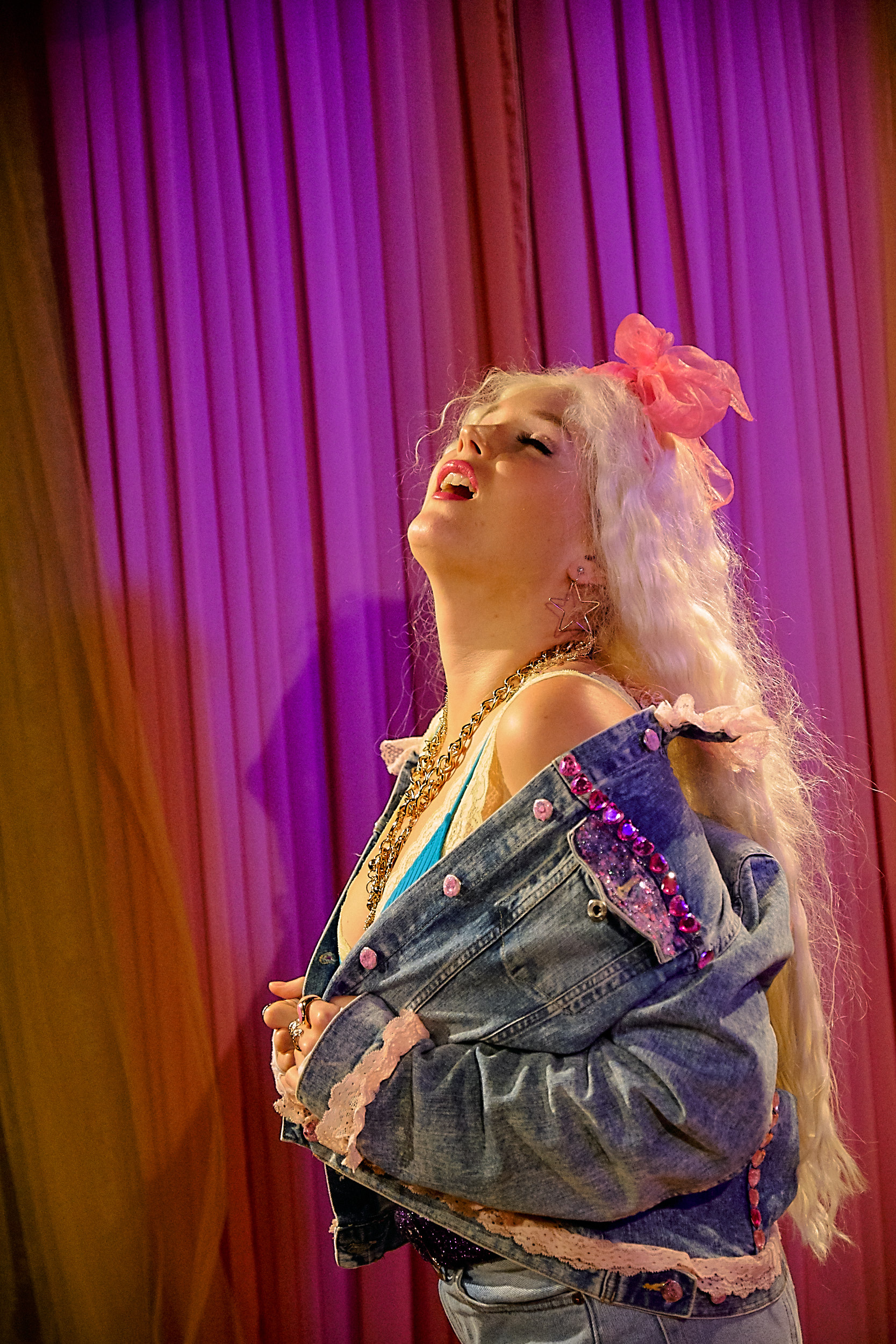
Synopsis by L. Gustafsson
1. Act
The actress pays homage to Kikka. She talks about playing. We hear a monologue of author Pekka Hiltunen on how he and his boyfriend went to an extra modest Kikka Fan Club meeting in the early 90’s, them and Kikka being the only grownups in the place. Kikka dreams of success. At the peak of her success she also has to face contempt, depreciation, and misogyny. On a video the director talks about body image issues and how she idolized Kikka as a child.
A reconstruction of a TV show Kikka attended the time everyone in Finland knew her. The interviewer talks about Kikka’s male fans, who masturbate in her concerts, and finally calls her a slut (although he explains that it’s not him who feels that way, but other people). Kikka defends herself: why couldn’t a woman be both beautiful and talented – why can’t one’s identity be seen in all of its diversity.
In a video the working group perform Kikka inspired dance. Kikka performs her most famous song, then she analyzes the lyrics: not only can they be interpreted as concerning sex, a whole different levels of aging, being a woman, and making a career as a female artist, can be read into the text.
2. Act
On a video the playwright talks about her inability to resist the prevailing beauty standards, and how she wishes, that someone would have told Kikka that it’s OK to be many things at the same time.
An announcement that Kikka has died. Kikka comes to stage older than in the first act. She talks with drag artist Pola Ivanka about the occasion Pola met her the last time. A monologue in which she both excuses and defends her artist persona. She tells that she’s more than the media has claimed her to be. She’s grateful to her fans. A Kikka inspired song that the working group wishes Kikka accepted, maybe would’ve even performed.
